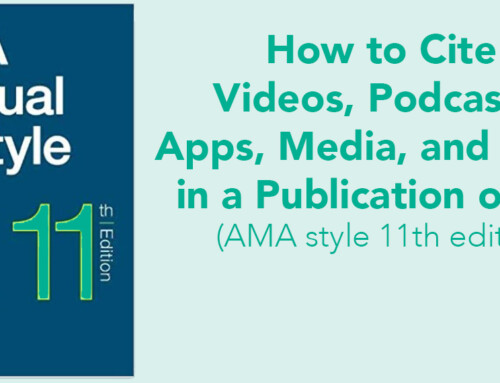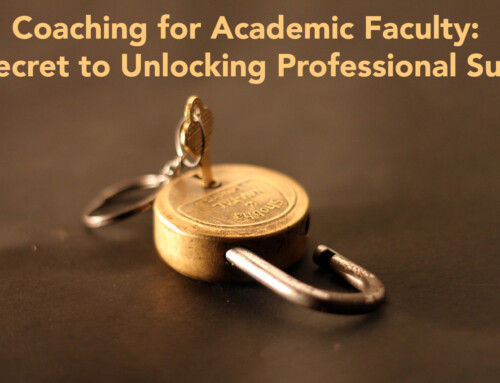 In April 2019, a group of intrepid readers embarked on an adventure together: the debut session of The Leader’s Library, ALiEM’s new career development book club. Learners and instructors from around the world read and discussed Dr. Brené Brown’s newest book, Dare to Lead, on a 5 day journey via Slack. Each day had its own theme (Rumbling with Vulnerability, Values, Empathy and Shame, Learning to Rise, and Toolkit), and the asynchronous discussion was robust. A day-by-day breakdown of our conversation, along with tangible takeaways and recommendations for further reading, is summarized below.
In April 2019, a group of intrepid readers embarked on an adventure together: the debut session of The Leader’s Library, ALiEM’s new career development book club. Learners and instructors from around the world read and discussed Dr. Brené Brown’s newest book, Dare to Lead, on a 5 day journey via Slack. Each day had its own theme (Rumbling with Vulnerability, Values, Empathy and Shame, Learning to Rise, and Toolkit), and the asynchronous discussion was robust. A day-by-day breakdown of our conversation, along with tangible takeaways and recommendations for further reading, is summarized below.
This was a lively day of dialogue. We started with Why? – thoughts on why we read books like Dare to Lead. It can be hard to contribute our best to organizations, and the group expressed feelings of a lack of guidance for “stepping up” to leadership roles. We also collectively mused that the people who most need to read this book and work on their vulnerability are the least likely to pick it up with an open mind and, sadly, we didn’t have any solutions for this paradox.
Participants were encouraged to take the Daring Leadership assessment. Recognizing the inadequacies of any measure of “daring leadership,” many were brave enough to share their scores, as well as deeper reflections prompted by the numbers.
From here we launched into discussing Daring Leadership / Rumbling with Vulnerability as a concept: what it is and what it looks like. Some participants’ ideas:
- “Confronting the difficult emotions– judgement, being upset/angry, disappointed, or even disagreement”
- ”It’s entering into an uncomfortable space and staying there while I am uncomfortable. Images (well, sounds) of thunder: a low, deep sound, signifying some discord deep beneath the surface. And a rumble is not fragmented–it is a continuous sound.”
- ”Intentionally marinating in emotional and self-worth dissonance with no real answers… and being ok with it.”
Psychological safety is a complex concept, but this safety to take interpersonal risk is essential; that fear of others’ response to our risk-taking prevents us from being vulnerable (Armored, rather than Daring, Leadership) and holds us back from achieving our highest potential.
Day 2 was TOUGH! We kicked things off by asking participants to name their core 2-3 Values [PDF list of values], those which drive our thoughts and actions. As Dr. Brown writes, “We can’t live into Values that we can’t name.”
Values are easy to read on paper but difficult to make concrete. While concepts behind chosen Values were similar for the group, surprisingly, no two people had the same list of 2-3 Values. Being a group of educators and learners, it wasn’t a surprise that Learning was frequently listed; Integrity and Courage were close behind. As the group wrestled with the concepts, two methods seemed to help narrow in on the choices. First was to group a few choices together under common themes and identify the linking Values. Another was to focus on times when one felt very angry; anger often emerges when our Values are violated and, thus, anger can help dial into one’s core Values.
The discussion then moved into reflecting on behaviors that demonstrate core Values, slippery behaviors that undermine living into our Values, and an example of fully living a particular Value, before closing with examples of operationalizing our Values. Compelling examples were shared by many, a displayed a spectrum of experiences, from listening to a refugee tell her story to finding the courage to speak up in an extremely hostile EHR implementation meeting.
We closed the day with a discussion on how to operationalize our Values, integrating them into our daily personal and professional practices.
Day 3 was an intense day, opening up the Shame we’ve felt when we don’t live up to expectations, whether those are our own or those of others. We discussed important quotes from Dr. Brown regarding the intersection of Shame and Empathy (the antidote to Shame), the key points being that Shame thrives in secrecy, silence, and judgement. We talked about how difficult, and yet how important, it is to be vocal of our beliefs and stand up for injustices when we see them, even in difficult situations such as in the clinical arena. Using Empathy, visualizing yourself in the role of the other person, is important. Examples we used to talk about how to do that is with the emerging role of virtual reality in high fidelity medical simulation exercises.
The role that Shame plays in leadership styles was also discussed and many shared their negative experiences of how leaders used Shame in detrimental ways. We also discussed how Shame and Empathy are important, and debated if it’s even possible to empathize with all of our patients. Could we risk becoming paralyzed by emotions and unable to manage the emergency department? Others felt that while it is important to function as a doctor, to empathize with our patients means to maintain our humanity and joy for our work – which is critically important. Dr. Papanagnou closed with an eloquent summary:
“Through our shared experiences, it is evident that Empathy is the antidote to Shame; but we must be mindful of ourselves, exercise self-compassion, and always ‘remain curious’ if we want our empathic connections to remain sustainable.”
The fourth day was spent discussing “learning to rise.” Failure is inevitable when we’re courageous and vulnerable and try new things; how do we systematically approach failure and recovery from it? As in, how can we perform a history, physical exam, assessment, and plan for failure? The day was facilitated with 5 questions.
1. Do you have a strategic and operational plan for failure?
Several people shared their systematic approach to failure. Common themes were advanced preparation (having a script in mind), modeling appropriate behavior (including self-care!), and reflective practice. An critical step was swiftly acknowledging and moving past the “shitty first drafts” and “stories we tell ourselves,” and on to better and brighter things.
2. What is your preferred offloading phenotype when you’re emotionally hooked (history)?
Offlloading (a.k.a. avoidance) strategies that were discussed included Chanderliering, Bouncing Hurt, Numbing Hurt, Stockpiling Hurt, The Umbridge, and Hurt and the Fear of High Centering. The majority of participants had a context-dependent variety of offloading mechanisms, although Numbing was the most common by far (distracting ourselves with fun stuff or, more commonly, more and more work until we don’t feel our pain). We talked about obtaining “Stumbling Mentors,” or “Failure Friends”– people we trust who will help us confront our emotions and grow from failure.
3. What kind of stories do you tell yourself when in failure mode (physical examination)?
A very common theme was telling ourselves that we’re not good enough and never will be– embodiment of “imposter syndrome.” We even took an Imposter Syndrome Scoring quiz (see Suggested Resources) and compared results.
4. How do you get more information about the situation, people, and yourself when in failure mode (assessment)?
We talked about conceptualizing the problem utilizing the Drama Triangle and directly asking stakeholders for more information– “approaching discomfort with inquiry.” With more information, we could switch from “‘What the F&*#?’ to ‘what’s their frame?.’” Two common techniques discussed to openly engage with others include “the story I am telling myself is…” and “let me circle back with you on…” For getting information about ourselves, we discussed and reinforced the importance of a good therapist/mental health professional in coping with the immense stress of our jobs; we need to normalize this in our field!
5. How do you approach stories that decrease your lovability? Your belief system? Your creativity? (plan)
Balance/mindfulness (and getting outdoors) was a common way to reinvigorate our lovability and creativity after failure, as was interacting with those who depend on us, whether as a parent or as a mentor– anything to get us out of our heads and back into the world.
The finale of the week, where we tried to put it all together. One thing we found was that different roles and career status can affect what you want in your toolkit. Our breakdown went into categories of trainees, junior faculty (<10 years out of residency), mid and senior faculty, and then a general toolbox.
Trainee Toolkit
- Imagining yourself as your leader, and what their side looks like
- Clear is kind – being clear on details and clarification
- Use TASC checklist for guidance on who to go to for what
- T: who owns the task?
- A: do they have the authority to be held accountable?
- S: are they set up for success?
- C: do we have a checklist of what needs to get done to be successful?
- “What does done look like?” can be a very important question for a trainee to ask – this can be similar to getting feedback ahead of time
Junior Faculty Toolkit
- Setting boundaries is essential, as junior faculty learn to establish themselves in their careers.
- Grounded confidence can help you remember that you have value and be brave to show that value, as well as help you combat imposter syndrome.
- Clinical and Administrative/Leadership roles can be different and develop at different rates. Don’t feel like they are always tied to one another.
- Find a sponsor for a project you’re excited about, and ask them to help talk it up!
Mid/Senior Faculty Toolkit
- Provide direct goal setting and feedback, to end fake vulnerability.
- Name and reframe the rumbly emotions.
- Commit to 3 core values to help guide your ship, and avoid pitfalls that cause unhappy moments and feelings.
- Leadership can require uncomfortable emotions like vulnerability, anxiety, and fear. If you avoid them, you will likely miss out on the opportunities those emotions provide and not be as successful as you could be.
- Never doubt the positive impact you can have on others.
General Toolkit
- Developing a shared language with your team– it might not include “Brené Brownisms,” but needs to be consistent.
- Nurture curiosity.
- TASC checklist
- Clear is kind, unclear is unkind.
- Acknowledge and name emotions.
- Rumble when able.
- “Paint done for me.”
- Create boundaries (“It’s OK to… but it’s not OK to…”)
- What does support look like for you?
- Practice empathy, rather than reflexive sympathy.
- Let me circle back with you (to learn more about the situation, the other person, and/or myself)
- Normalizing the practice of feedback giving and receiving.
- Consider debriefing after every single shift: “How could that shift have been 1% better?”
- Common set of tools and language for having hard conversations, rumbling, and giving feedback [PDF] from Dr. Brown’s website
- Daring Leadership assessment
- Dr. Rob Cooney’s review of Daring Greatly
- Brené Brown’s TEDtalk on Vulnerability
- Brené Brown on Empathy (Youtube video)
- Brené Brown on Empathy, as it concerns healthcare providers
- Brene Brown’s Facebook Q&A video on her “The Call to Courage” Netflix special
Books
- Thanks for the Feedback: The Science and Art of Receiving Feedback Well (by Douglas Stone and Sheila Heen)
- The Culture Code: The Secrets of Highly Successful Groups (by Daniel Coyle)
- Radical Candor: Be a Kick-ass Boss without Losing Your Humanity (by Kim Scott)
- Teaming: How Organizations Learn, Innovate, and Compete in the Knowledge Economy and The Fearless Organization: Creating Psychological Safety in the Workplace for Learning, Innovation, and Growth (by Amy C. Edmondson)
- Adaptive leadership for the new #MedEd: The one hour read [PDF] (by Felix Ankel and Jonathan Sherbino)
- Extreme Ownership: How U.S. Navy Seals Lead and Win and The Dichotomy of Leadership: Balancing the Challenges of Extreme
- Ownership to Lead and Win (by Jocko Willink and Leif Babin)
- Intelligent Kindness: Reforming the Culture of Healthcare (by John Ballatt and Penelope Campling)
- Good and Mad: The Revolutionary Power of Women’s Anger (by Rebecca Traister)
- When No One’s Watching: Living & Leading Self-Motivation (by E. Scott Geller and Bob Viazie)
- The Courage to Teach: Exploring the Inner Landscape of a Teacher’s Life and Let Your Life Speak: Listening for the Voice of Vocation (by Parker Palmer)
- The Ethics of Authenticity (by Charles Taylor)
- Help, Thanks, Wow: The Three Essential Prayers (by Anne Lamott)
- Man’s Search for Meaning (by Viktor Frankl)
- Nonviolent Communication: A Language of Life (by Marshall Rosenberg)
- Clear Leadership: Sustaining Real Collaboration and Partnership at Work (by Gervase Bushe) – PDF Summary
- The Feeling Good Handbook (by David D. Burns)
Other Reading
- When Will We See More “Shes” in the C-Suite? (by Howard Wolinsky)
- How 1% Performance Improvements Led to Olympic Gold (by Eben Harrell)
- Fundamental Change to Organizational Structure and Governance (by Nancy Dixon)
- Curated Collection for Editors: Five Key Papers about Second Victim Syndrome (by Mitzman et al.)
- Failure Friends (by Sara Gray)
- The Best Managers Understand Their Employees’ Emotions– And Their Own (by Mollie West Duffy and Liz Fosslien)
- The Feedback Formula: Part 1, Giving Feedback (by Michael Gisondi)
Audio/Video
- Failed Coping: Recognizing and Responding to Suicide Risk in Our Trainees & Colleagues (by Loice Swisher and Christopher Doty)
- How to Fail (by Kevin Fong)
- Drama Triangle: Introduction and Overview
- Helping without Harming (by Jenny Rudolph)
Tools
- TeamSTEPPS: useful for debriefing and quality improvement (AHRQ)
- Dr. Kristin Neff’s self compassion score
- The Johari Window, a way to compare how we view ourselves with how we’re being perceived
- Imposter Syndrome scale
- Emotional Intelligence (EQ) resources
- Beyond Medical Histories: Gaining Insight from Patient Stories: Online course on narrative medicine
Overall, the inaugural session of The Leader’s Library was an overwhelming success, and we look forward to learning with you next time, when we read Radical Candor by Kim Scott. Stay tuned for signups!

Dina Wallin, MD
Co-Medical Director of Pediatric Emergency Medicine,
Zuckerberg San Francisco General Hospital;
Director of Didactics, SFGH-UCSF Emergency Medicine Residency;
Assistant Clinical Professor of Emergency Medicine and Pediatrics,
University of California San Francisco

Latest posts by Dina Wallin, MD (see all)
- PEM Pearls: An Approach to Infant Apnea - September 26, 2022
- The Leader’s Library: New Rules of Work | Sign up to join the book club - March 15, 2022
- How We Have Kept and Will Continue to Keep Going | Summary of The Leader’s Library Discussion - June 29, 2021

Victoria Brazil, MD MBA
Director of Clinical Simulation
Bond University Faculty of Health Sciences and Medicine

Latest posts by Victoria Brazil, MD MBA (see all)

Robert Cooney, MD MSMedEd
Director of Faculty Development
Department of Emergency Medicine
Geisinger Medical Center

@EMEducation

Latest posts by Robert Cooney, MD MSMedEd (see all)
- Teaching in the age of COVID-19: The learning management system - March 19, 2020
- Teaching in the age of COVID-19: Real-time video conferencing - March 17, 2020
- Teaching in the age of COVID-19: Teaching with tech while socially distancing - March 17, 2020

Rosny Daniel, MD
Department of Emergency Medicine
University of California, San Francisco

Latest posts by Rosny Daniel, MD (see all)

Michael Gisondi, MD
Department of Emergency Medicine
Stanford University
Editor, ALiEM EM Match Advice series

Latest posts by Michael Gisondi, MD (see all)
- Mismatch: Why were there so many unfilled emergency medicine residency positions in 2023? - July 17, 2023
- The Fall of FOAM - October 19, 2022
- How I Educate Series: Michael Gisondi, MD - August 3, 2022

Tanner Gronowski, DO
ALiEM Chief Resident Incubator 2018-19
USACS Firefighter/Traveling Emergency Physician

Latest posts by Tanner Gronowski, DO (see all)
- Match Day! Words of Wisdom for Life - March 27, 2020
- The Leader’s Library: Dare To Lead | Curated Summary of the Discussion - June 14, 2019
- The 2018-19 Chief Resident Incubator enrollment opens TODAY - April 2, 2018

Nikita Joshi, MD
Clinical Instructor
Department of Emergency Medicine
Stanford University

@njoshi8

Latest posts by Nikita Joshi, MD (see all)
- The Leader’s Library: Dare To Lead | Curated Summary of the Discussion - June 14, 2019
- 2017 Annual Report: Inspiration and Ideas - December 28, 2017
- ALiEM Awards 2017: Congratulations to Our Winners! - December 4, 2017

Resa Lewiss, MD
Professor of Emergency Medicine
Thomas Jefferson University

Latest posts by Resa Lewiss, MD (see all)
- Ultrasound for the Win! 18M with dysphagia #US4TW - August 26, 2019
- The Leader’s Library: Dare To Lead | Curated Summary of the Discussion - June 14, 2019
- Ultrasound Gel Warmers in the Emergency Department? - May 15, 2019

Dimitrios Papanagnou, MD, MPH, EdD(c)
Department of Emergency Medicine
Assistant Dean, Faculty Development
Department of Emergency Medicine
Thomas Jefferson University Hospital
Philadelphia, PA

Latest posts by Dimitrios Papanagnou, MD, MPH, EdD(c) (see all)
- IDEA Series: Use of gamification through Clue: Pediatric Rash Edition - May 13, 2020
- The Leader’s Library: Dare To Lead | Curated Summary of the Discussion - June 14, 2019
- IDEA Series: A Workshop to Reflect on Personal Resilience - February 12, 2019

Felix Ankel, MD
Department of Emergency Medicine
University of Minnesota Medical School
Regions Hospital





